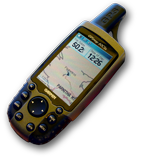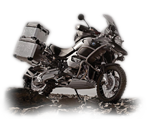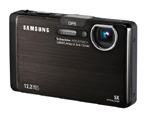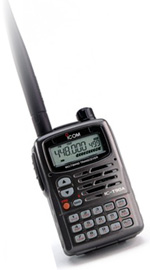Regions and Tracks






Our hard enduro bike is actually a pure motocross bike. We are talking about the Honda CRF450R. An excerpt from the US based, absolutely credible, "motorcycle.com" refers to this bike, as…

Pretty much everyone is familiar with the 450 Honda. The four-valve, uni-cam engine is relatively simple and has grown to be more reliable with each passing year. The transmission and engine oil are separate, allowing optimum lubes for each application and no chance of dirty transmission oil circulating through the engine. At a claimed 108kg, the bike’s weight is right in there with the rest of the 450 class. Going to fuel injection cured some of the 450’s bad habits, but not completely.
You never forget you’re on a big, serious motocross bike. Instant throttle response and raw grunt from bottom to top make this a brutally effective motocross engine, mated to a slick shifting tranny and a smooth clutch. The CRF’s low-end thrust is confidence inspiring when the gaps get big. In the woods the instant throttle response of the CRF450 can simply be too much, too soon. The CRF is a tidy handler that rewards a precise rider.
That big, powerful engine is the biggest part of the handling package. Like the engine, the chassis never lets you forget you are on a serious motocross bike. In playbike mode the suspension is simply too aggressively sprung and valved. When it comes to other important stuff, like ergonomics, the CRF450R simply rules. Zero complaints from anyone. The bike is fast, handles well, despite having a huge amount of instant power and mediocre front suspension, and has created a giant aftermarket following.
It might not be the most well rounded bike out there, but it kills as a hardcore motocross bike and can be converted into anything from an enduro bike to a dirt track racer or supermoto bike with little effort.
Some journeys you can tell are going to be tough just by looking at the map. But the reality is always going to be tougher.

And that’s where our BMW R 1200 GS Adventure comes into its own. However far we have to go, whatever the terrain, this is a motorcycle that will never let us down.
With superb suspension, brakes you can rely on, supreme ride ability and an engine that delivers lots of torque, power and responsiveness, the R 1200 GS Adventure was made to explore new horizons.
The R 1200 GS Adventure is truly unstoppable. It is built without compromise to handle anything the planet’s roads – and off–road – can throw at it. Delivers effortless throttle response, while the Enduro ESA suspension option ensures supreme traction and ride comfort.
No Desert, no mountain and no river can stop us. The only limit is our own imagination; 53,000km to–date.
Transportation on location was supported by car and trailer. The car we used for most of the tracks posted in this web site was a Subaru Impreza WRX Sti. The famous "car.com" in US refers to this car, as…

The 2006 Subaru WRX STI, a made-for-the-street version of an Impreza rally car that can be seen from time to time on the Speed Channel or ESPN, hauling tail through the air or performing a four-wheel drift in the forest to the thrill of hard-core fans. Similar to companies like Honda and Toyota using the track or off-road racing courses to develop technology ultimately available in the showroom, Subaru uses the hair-raising rally environment as a testing ground for the STI destined for your driveway. The result is an extremely capable sedan that will do its part to hustle its master between home and work, yet begs for its 300 turbocharged horsepower and 300 lb.-ft. of torque to be unleashed on curvy pavement.
Serving to demarcate the relatively mainstream Subaru WRX from the WRX STI is an aluminum turbocharged 2.5-liter four-cylinder engine that punishes the pavement with 300 horsepower at 6,000 rpm and 300 lb.-ft. of twist at 4,000 rpm. That boosted angst is pushed to all four Bridgestone Potenza 225/45R17 performance tires through a six-speed manual gearbox. In comparison, other WRX models offer only 230 horses, 235 lb.-ft. of torque, and a five-speed manual or optional four-speed automatic transmission.
However, there’s more to the STI than a stout powertrain, like upgraded ABS and electronic brake-force distribution tied to Brembo vented discs, quick-ratio rack-and-pinion steering, and a high-performance suspension system with inverted struts as well as lower L arms up front and a parallel link setup on the rear. BBS 17-inch wheels are standard, kept under control by limited-slip front and rear differentials and a center differential that can be automatically locked or manually adjusted by the driver using a dial placed on the center console.
To top it all off, this little Subaru boasts a 2,000-lb. tow rating. That’s the mechanical side of the 2006 Subaru WRX STI, a limited view that fails to recognize the car’s creature comforts and oh-so-conspicuous visual enhancements. Yeah, we’re referring to that garish rear wing, which along with BBS wheels sprayed in gold or silver, painted Brembo brake calipers, a stainless steel exhaust tip, body-color wheel flares, a rear spoiler mounted above the back glass, STI front fog light covers, a lower body kit, high-intensity discharge headlights, and strategically-placed STI badges serves to separate this powerhouse from the rest of the WRX pack.
The interior features unique items such as front sport bucket seats; Alcantara leather upholstery with suede inserts; soft leather with red stitching on the steering wheel, shift knob, and parking brake handle; and a 9,000-rpm tachometer for those wound-out back country runs.
Even though the design would look more appropriate in a high school parking lot than slotted next to the CEO’s Mercedes, this little rocket is best kept in the hands of mature, knowledgeable drivers. Why? Because it’s so darn fun to drive wickedly fast in areas where signs caution of narrow twisty roads and urge drivers to slow considerably. Problem is, flinging the STI through a batch of twisties at high speeds can feel as safe as driving a Buick down the highway at 65 mph.
On a remote road in the mountains above Malibu, I was able to search out the limits of the STI with countless sweepers and tight turns, gaining more appreciation for the steering’s excellent feedback, the almost nonexistent body roll accented by just a touch of oversteer, and the Bridgestone Potenza tires’ outstanding grip. As the run progressed, I felt increasingly comfortable tacking on a few extra mph’s through each turn. It became clear that the STI could take whatever I threw at it my skills would likely find their limits much sooner.
We use a Garmin GPSmap 60CSx GPS device, mounted on the bike via a Touratech aluminum mount. Here is a short review from "gpstracklog.com"…

The Garmin GPSMAP 60CSx updated the now ancient Garmin 60CS with two important improvements. First, the 60CSx includes the SiRFSTARIII chipset, which has been getting rave reviews for its fast acquisition time and awesome coverage under canopy, in urban canyons and even indoors! Second, the 60CSx no longer utilizes the built in memory for MapSource maps, but loads them to a removable microSD card instead (the unit comes with a 64 MB card). This means you have nearly unlimited map storage capability.
The Garmin GPSMAP 60CSx is great for hikers and bikers. There are newer, flashier units, but the 60CSx is tried and true, and is perhaps the most accurate handheld GPS on the market; I always use mine as a comparison whenever I am testing new devices for accuracy. One other point the 60CSx is identical to the 60Cx, except that this unit, the 60CSx, adds an electronic compass and barometric altimeter.
Here’s a snippet from Amazon’s Garmin GPSMAP 60CSx review:
"The venerable Garmin 60CS just got a whole lot better. The 7.5-ounce GPSMap 60CSx now features an insanely accurate, high-sensitivity GPS receiver by SiRF that tracks your position even in tree cover and canyons. Plus, you get a bright, sunlight-readable color TFT display and an included a 64 MB microSD card for storage of optional map detail. Add all that to the 60CSx’s integrated barometric altimeter and electronic compass, and you’ve got a unit that is ready to take you anywhere on land or sea".
On the field we are using a small pocket size camera, with geotagging capability, quality lens, long battery life and wireless connectivity. It is the Samsung ST1000. Here is a short review from "cnet.co.uk":

Most manufacturers would be happy to shoehorn just a single wireless technology into a compact camera, but Samsung has built no fewer than three into the 12.2-megapixel ST1000. This isn’t just a camera, it’s a technological showcase.
Even without taking into account its wireless connectivity, the ST1000 is a very classy camera. It’s fairly big and heavy for a super-slim model, but the metal finish and overall look and feel are excellent. On the top, there’s a power button, shutter release, zoom switch and playback button, and, on the back, there’s a giant, 89mm (3.5-inch) touchscreen display that takes up almost the whole surface area. The ST1000’s images are fine generally, but, when viewed up close, they have an over-processed look in which the edges of objects are sharp but fine textures, like distant trees or brickwork, are smoothed over. The ST1000 has the same 1,152,000-pixel display as the Samsung ST550.
The wireless side of the ST1000 is brilliant. If you want to send a photo to someone else’s phone via Bluetooth, you just carry out a search for nearby devices, pick the one you want, arrange a password and, when the other device accepts the image, it’s done. What if you want to send a photo by email instead? For this, you’ll need a nearby wireless-access point (you can type in passwords if needed), and then you just type in the email address via an on-screen Qwerty keyboard, choose the photos you want to send, and off they go. Alternatively, you can upload them to your favourite online photo site, such as Picasa Web Albums. Again, the Qwerty keyboard makes entering usernames and passwords easy.
Then there’s the GPS. Like the Bluetooth and Wi-Fi features, it works simply and well. GPS technology has its own limitations -- you probably won’t get a signal indoors, for example, and tall trees and buildings can cause reception problems -- but, within the limits of the technology, the ST1000 works perfectly, embedding GPS co-ordinates automatically in your images so that geotagging apps like Picasa and iPhoto on the Mac can display their location on a map. The ST1000 even includes its own basic mapping tools, and can display the names of towns and cities on the camera. You can use this feature to search by location for photos stored on the camera.
There’s also an enhanced face-detection system that can identify mugs it’s seen before and give them priority, and the auto scene-selection mode uses 15 different scenes, whereas equivalent modes on many rival cameras use just a handful of the most obvious, like "portrait", "macro" and so on.
Unless you’re the sort of person that reads a manual from front to back before using anything, you probably won’t realise that photos sent wirelessly are resized to a smaller resolution (1,600x1,200 pixels), which is disappointing, although they’re still fine for all kinds of on-screen use and snapshot-sized prints. The 5x zoom and 12.2-megapixel sensor delivered very crisp results with our test chart, and there’s little distortion or chromatic aberration, although the definition does drop off at the edges of the frame.
On a practical level, you might wish the ST1000 had a wideangle zoom, rather than the 35-175mm equivalent lens supplied. Also, while the image processing makes coarse detail look super-sharp, it smudges finer textures. The ST1000 relies on microSD and microSDHC cards, too, although these are easy enough to come by now.
Up in the mountains, in gorges and hidden tracks, it may be that there is no mobile phone signal. What we feel as given in the urban areas is lost up there in the mountains. Therefore it is necessary a means of backup communication, among few members of the team.

For that purpose a small VHF device is the undisputable solution. By that we mean a real VHF transceiver and not the many toys of 2km distance coverage (called "family radios"). In tricky situations they can limit their span to less than 400m. This is why we selected a small form factor, digital, iCom IC T90A VHF/UHF multiband fm transceiver. It is a surprisingly compact, full featured tri-bander with wideband receiver, quickly profiled as…
The commercial grade IC-T90A transceiver offers a wideband AM, FM, and WFM scanning receiver (495kHz to 999.990MHz). Not only you can hear your favorite TV programs with the pre-programmed TV memories, but also you can listen to shortwave, AM and FM broadcast radio stations with good sound quality. Fire, aircraft and various amateur bands also can be tuned.
With 555 alphanumeric memory channels, including 50 band edges and 5 call channels, Icom’s DMS (Dynamic Memory Scan) technology gives you flexible scanning lists. With a maximum of 18 banks or 100 channels per bank, you can pick and choose the desired channel for scanning from the 500 memories.
Enjoy a full 5 watts from the supplied 1300mAh Lithium-Ion battery pack, BP-217. Along with the energy conserving settings, the BP-217 provides up to 5 to 6 hours (Tx high: Rx: Stand-by duty ratio= 1: 1: 8) of operating time and greatly reduces both the size and weight needed to get full output power. Just recharge and go!
This compact radio is palm sized comfortable in the smallest of hands, and offers full radio control for large fingers. The rugged aluminum die-cast case and chassis is designed for the most rugged environments with splash resistance equivalent to JIS 4 specifications.
DTCS and CTCSS tone squelch: a standard feature of the IC-T90A is both DTCS and CTCSS encode and decode capability. Choose from either 104 DTCS or 50 CTCSS codes for receive and transmit, individually. In addition, a pocket beep function gives you an audio alert when a matched tone signal is received; a great feature for quiet, group operations.
Simple, one-handed operation is the most valuable feature of the IC-T90A. The backlit ten-key pad allows you to enter frequency, memory number and set various other features. The tuning knob can be customized for either channel selection, or volume control.

Our camping companion tent. Lightweight, fits perfectly in our bike’s aluminum side case.
It sleeps two persons and has a floor size of 230x150cm. It has a freestanding fiberglass frame with clips, and post and grommet assembly. It’s pack size is 13x60cm and has a center height of 117cm. Gives you all the freedom of choice, to stop anywhere you like and get a nice sleep until next morning.